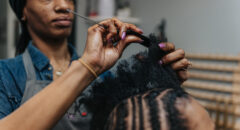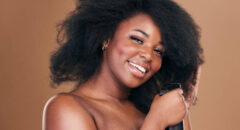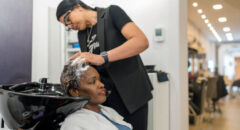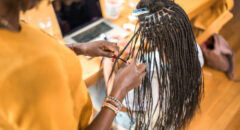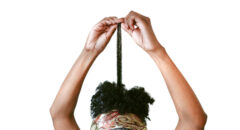
Even if you love your natural curls, you might be interested in switching things up with a straight style. When you think about straightening your hair, though, the thought of damaging it might be a deterrent. Fortunately, there’s a way for you to straighten your hair without reducing it to a brittle mess. It’s called heat training and the only way to get it right is to know the difference.
How is Heat Training Different From Heat Damage?
According to some stylists, heat training is a more controlled way of slightly damaging your hair. When you heat your hair, it breaks down the proteins to loosen your curls. The difference between heat training and heat damage is that you don’t go overboard. You follow a consistent regimen of straightening your hair a few times per month so that your hair is less curly but not so straight that it’s considered damaged.
The key is being patient as the training is unlikely to give you the exact level of straightness you’re looking for after only the first or second time. By doing this, you will learn about what your hair can manage. When you use gentle heat over time, you can have hair that’s easier to style and has fewer tangles while still maintaining your curl pattern. It gives you the opportunity to wear your natural curls when it’s not straight.
With heat damage, on the other hand, you’ll keep straightening your hair with significant heat until you get what you want the first time. In this way, you won’t pay attention to what’s going on with your hair as long as it’s straight. The result is damaged hair that no longer maintains its curls and becomes weak.
It can be a tight line to walk depending on your hair type but it can be done with the help of your stylist. You need to follow their instructions exactly to avoid damaging your hair.
RELATED: 10 Ways Black Women Can Grow Thick, Long Hair
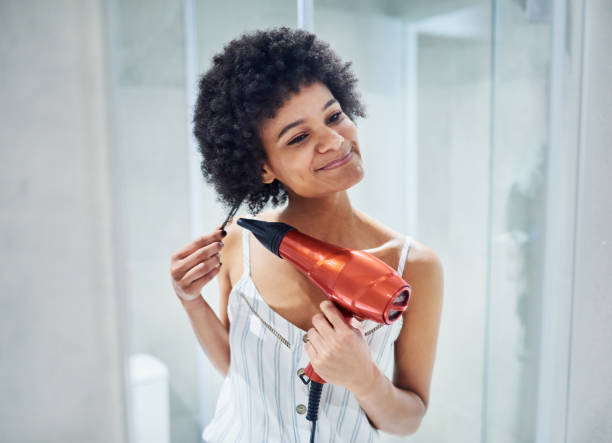
How do You Know if You’ve Damaged Your Hair?
Heat-trained hair is straighter than your natural curls but usually, you can still see remnants of the curl pattern. The hair should be easily styled without getting tangled. Most importantly, you can usually undo the whole process when you wash it.
Heat-damaged hair is another matter. In most cases, the hair will no longer show aspects of your curl pattern and it may not return to being curly after you’ve washed it. Other signs of heat damage include frequent split ends, dry hair, a rougher texture, constant breakage, frizzy hair that has flyaways, dull hair with fading color, excessive shedding, and a lot of tangling.
RELATED: Secrets For A Non-Damaging Silk Press
How to Treat Damaged Hair
The good news is that heat damage doesn’t need to be permanent. Once you’ve identified that your hair is damaged, you can move forward to returning it to a healthy state. While some people may suggest doing a drastic cut and starting all over, that’s not your only option. There are ways to bring your hair back to life that don’t include cutting it all off.
Your first step is putting away everything that uses heat. This includes blow dryers, curling irons, and flat irons. When your hair is heat damaged, the last thing you want to do is use heat on it again. It will only make things worse. Instead, you should allow your hair to air dry after it has been washed and focus on styles that don’t require heat.
The next thing you should do is ensure that you’re using products that are meant to rehabilitate damaged hair. It’s best to look for shampoos and conditioners that contain fortifying amino acids and nourishing ingredients that are meant to moisturize, strengthen as well as restore weakened hair. You should also add a deep conditioning mask as that will add proteins to your hair and strengthen the strands.
Additionally, moisturizers are essential to keeping your hair healthy. A good leave-in conditioner can stop your hair from tangling, shedding, or breaking. You should check with your stylist to determine what’s best for your hair. Some people do well with only a leave-in conditioner while others need to develop a regimen that includes oils as well.
Heat isn’t the only thing you should avoid when trying to restore your hair. Chemicals like hair dye, bleach, and hair relaxers won’t do your damaged strands any favors. As you work on building it back up, you should leave your hair in its natural state as much as possible.
When it comes to styling, you must be gentle with your hair. A soft towel is preferable to a rough one and it’s best to pat gently to dry it. You should use a wide-tooth comb or your fingers to detangle it and stay away from any styles that will pull on your hair too much. Sleeping with your hair in a bonnet or on silk or satin pillowcases will prevent friction that will further damage your hair.
Finally, you should plan to trim your hair every four to six weeks. Your ends will be the most damaged part of your hair and you don’t want the split ends to spread farther up the strands. If this happens, your hair won’t get a chance to thrive. Removing the old ends will make space for healthy new growth.
RELATED: How To Protect Your Hair From Heat Styling
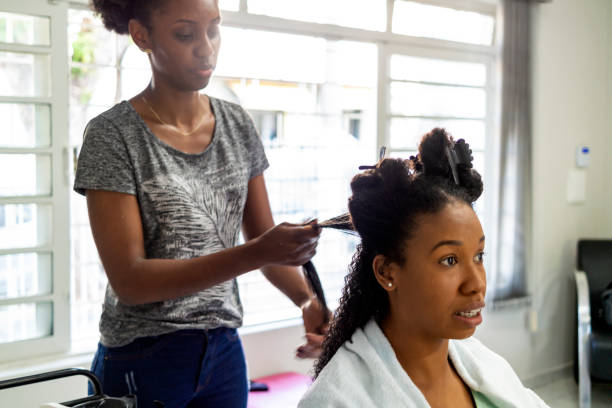
Ways to Prevent Heat Damage
Even if you’re not heat-training your hair, it’s good to know how to properly use heat on your curls. According to stylists, you should never use any form of heat on your hair unless you have applied a heat protectant. These protectants are designed to prevent damage when you’re using heat to style your hair and they’re available in different forms depending on your hair type.
When styling your hair, don’t jump straight to the hottest setting. You might not need that much heat to get the level of straightening you’re looking for. It’s best to start at a moderate heat and proceed accordingly. Lower temperatures are less stressful for your hair.
You should also consider taking breaks from heat styling so your hair can breathe. Incorporating air drying, loose styles, and protective styles can keep your hair healthy in between heated styles. Additionally, there are ways to get the same look without applying heat to your hair. If you’re looking for options, search for the kinds of sleep styles you want using ‘heat free’ as an additional term.
Not all forms of heating are created equal when it comes to your hair. Heat training is an excellent option for those who want to straighten their hair without damaging it. If you damage it, though, it’s not the end of the world because you can revitalize your hair if you know what to do.



